Purple martins are a bird of the people.
Throughout most of their range, martins are completely dependent on human-created nesting structures. Even beyond the nesting season, purple martins commonly establish roost sites in and around human-created structures.
It’s not clear when martins made the switch from natural nesting cavities to human-constructed purple martin houses.
Many writers suggest that Native Americans built purple martin houses and that the switch to human-made housing was underway before the arrival of Europeans in North America. Although this is entirely plausible, there isn’t much evidence that Native Americans are responsible for the bird’s transition from natural to human-made nest sites.
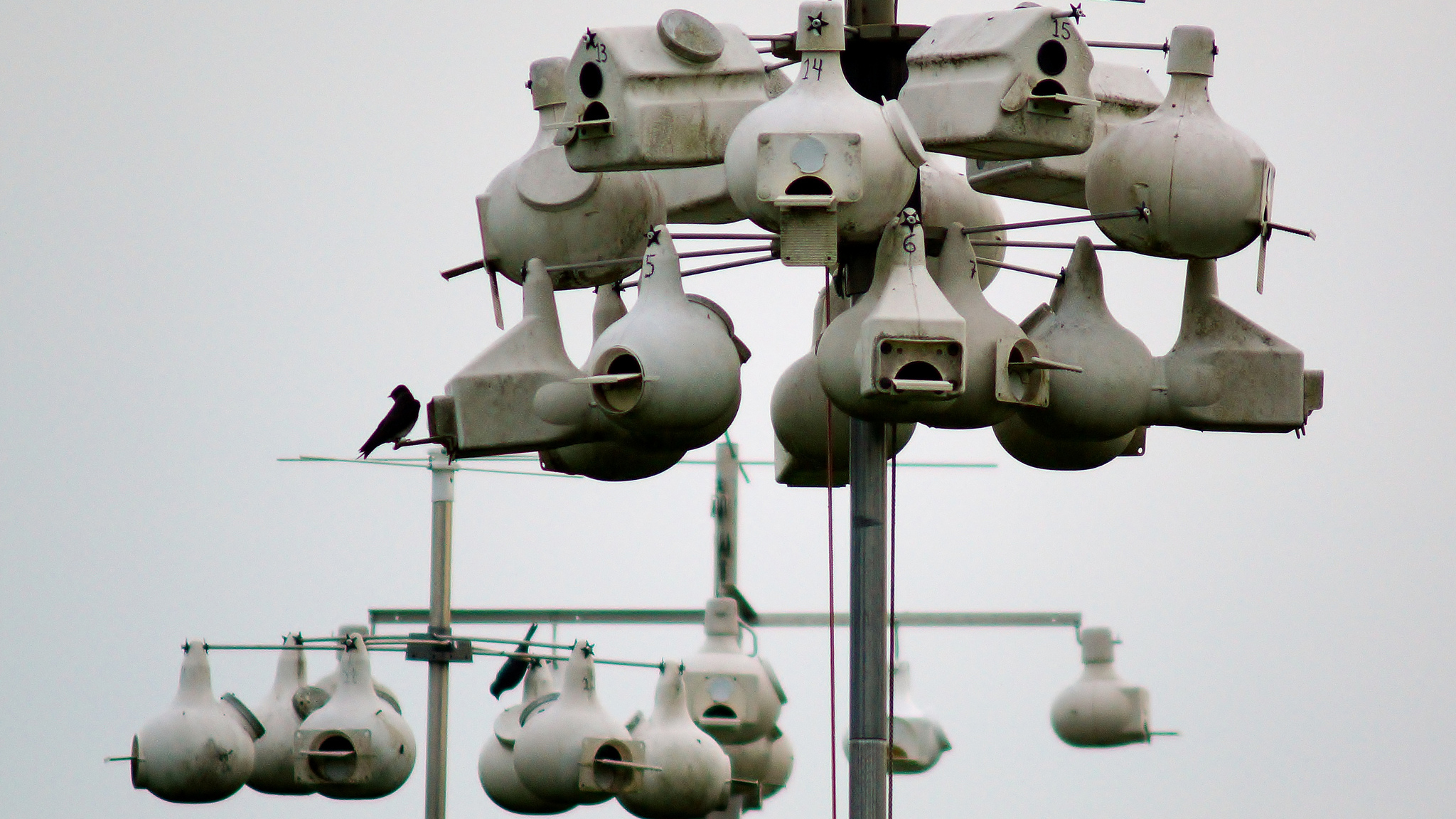
Early American ornithologists did mention seeing Native American-built gourd houses. But they made these observations well after Europeans settled in North America.
In his book American Ornithology (1808), Alexander Wilson implies that while visiting Choctaw and Chickasaw settlements during the late 1700s, he saw hollowed-out gourds for purple martins placed atop poles.
Even in the early 1700s, naturalist Mark Catesby noted that martin houses were a common sight in colonial farms and towns in the Carolinas.
By the time Wilson and Catesby made their observations, everyone had martin houses.
Should We Rename Them People Martins?
Equally unclear is why people became interested in providing martins a home.
Some potential benefits offered by early observers are that the birds reduced the general bugginess around human habitation and that the martins protected barnyard fowl by mobbing and chasing hawks.
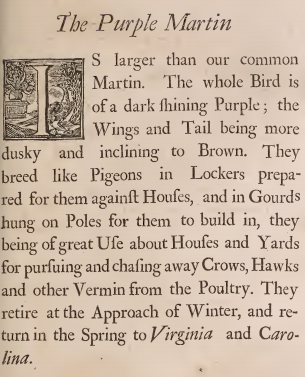
The popularity of providing homes for martins in modern times may stem from the mistaken belief that they are effective at controlling mosquitoes.
A dubious factoid, stated and restated over decades, asserts that, “a single martin eats 2,000 mosquitoes per day.”
Herbert Kale set the record straight in his 1968 article in the journal The Auk, demonstrating that there was no evidence that purple martins eat very many mosquitoes.
He pinned the blame for the false factoid on J.L. Wade, a businessman who “made a fortune building pole-top condominiums for purple martins.”
According to his 2007 obituary in the Wall Street Journal, Wade was so fond of the “2,000 mosquitoes” claim that he changed the last four digits of his phone number to “2000.” Despite false advertising, Wade is remembered as a tireless advocate for purple martins (and for martin houses!).
What do martins really eat? Everything but mosquitos, it seems. They eat a wide variety of larger-flying insects including beetles, flies, dragonflies, grasshoppers, wasps and bees.
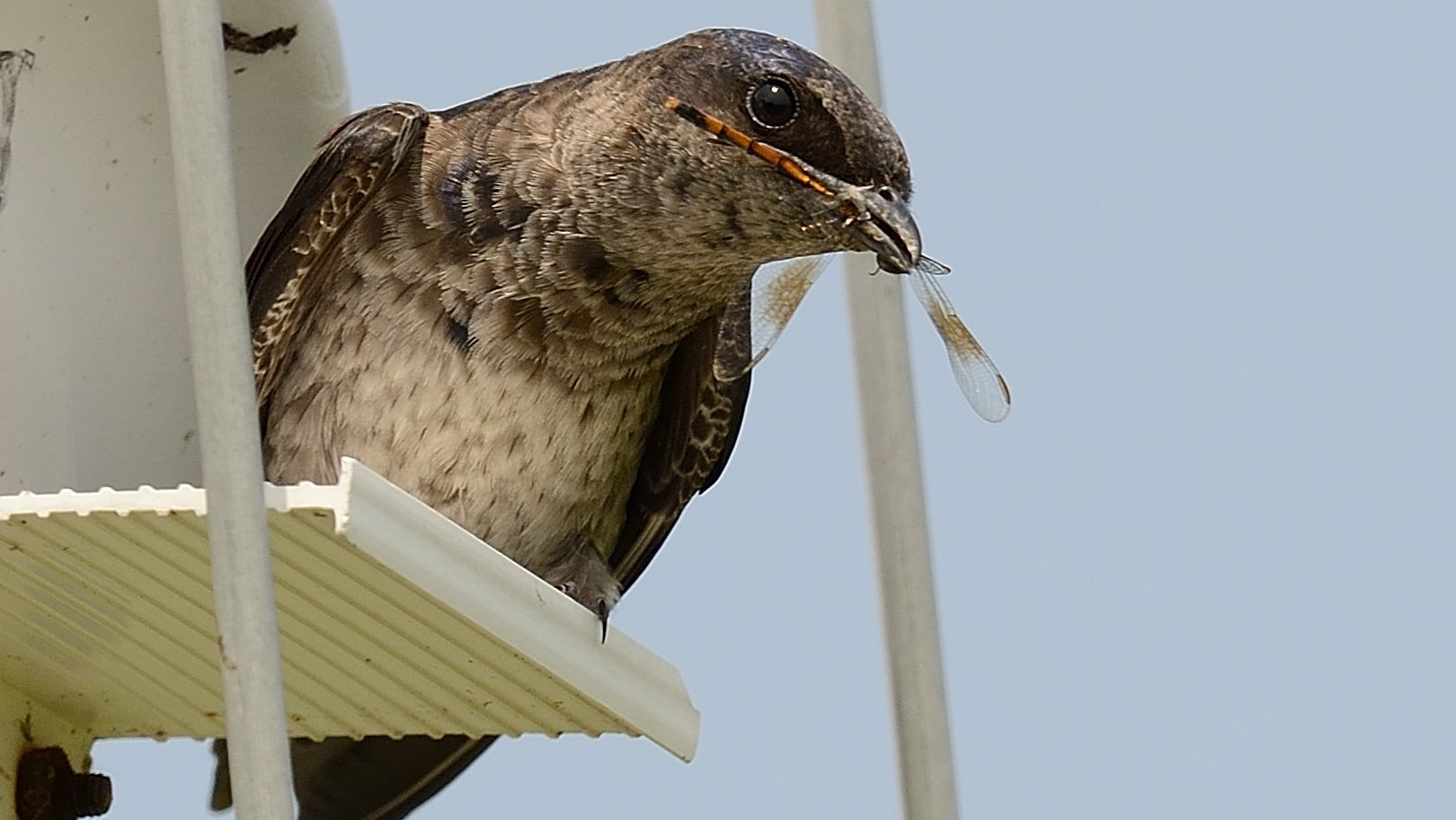
Recent research has revealed that martins do provide an important insect control service after all. They hoover up as many flying fire ant queens as they can. A 2016 study revealed that fire ants comprise 56% of all items consumed by martins at study site in Oklahoma.
Fire ants were introduced from South America and are now common throughout the southeast United States. Among other undesirable attributes, fire ants build mounds that dot lawns, fields and pastures. Whenever a mound is disturbed, the ants attack en masse with painful stings.
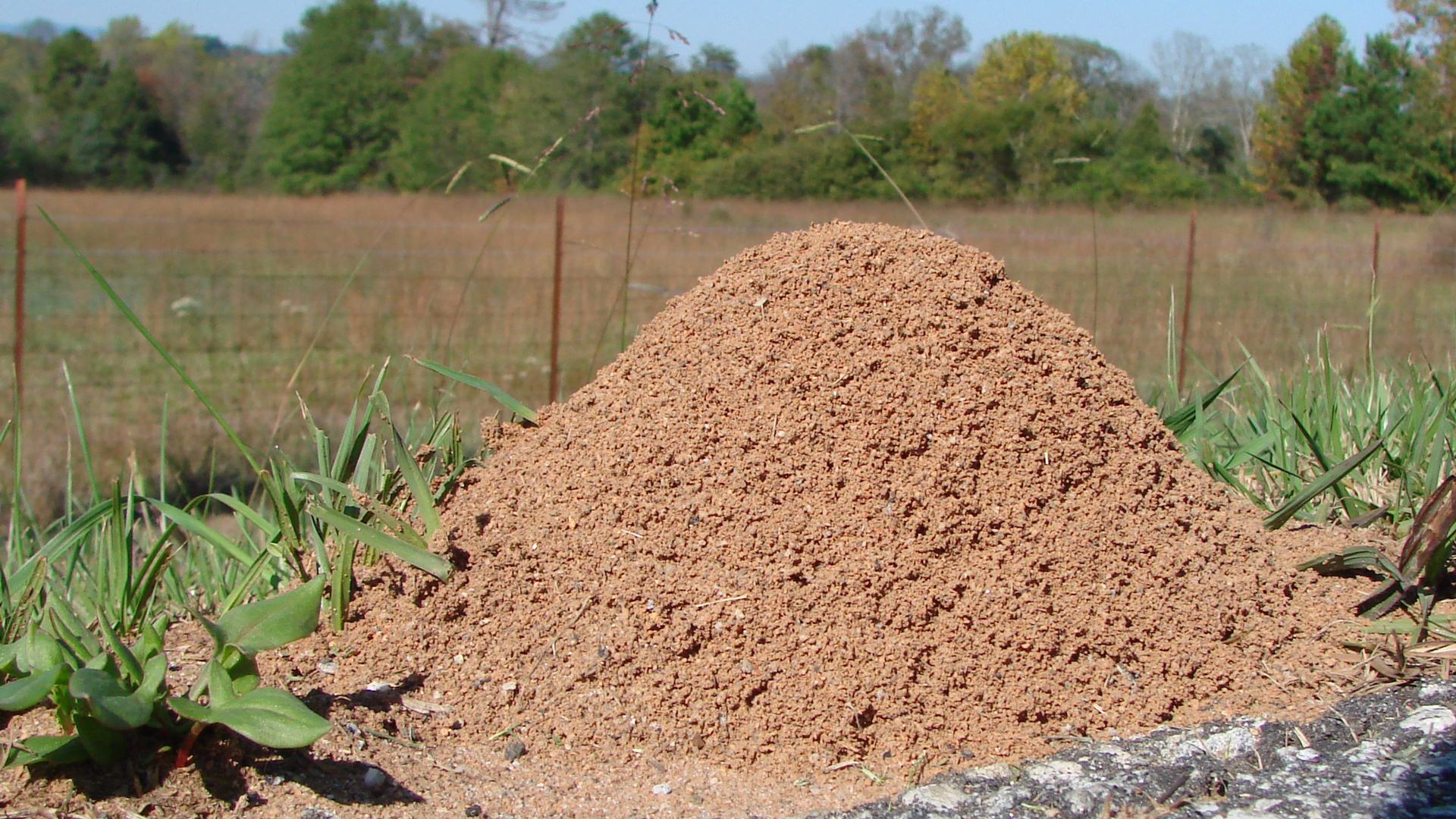
Each queen a purple martin scarfs up means one less pestilential mound of cranky ants on the lawns of Dixie.
Urban Martins
Beyond the nesting season, purple martins remain a bird of the people.
After nesting and prior to migrating, thousands of martins gather to roost in such places as bridges, powerline structures and trees in parking lots, along with locations in more natural settings.
Roosts are a dramatic and easily observable wildlife spectacle in mid to late summer – especially at dusk when the birds arrive and whoosh by the thousands into the roost site. If you live in the eastern U.S. it’s very likely that one of these roosts is close by. Check this map of roost sites, courtesy of the Purple Martin Conservation Association.
In 1903, P.A. Taverner described a roost in Chicago that formed at the corner of Washington Square Park. He writes that “in all of Chicago, I know of no spot that would seem more unlikely to be used for such a purpose.” He goes on to describe the scene:
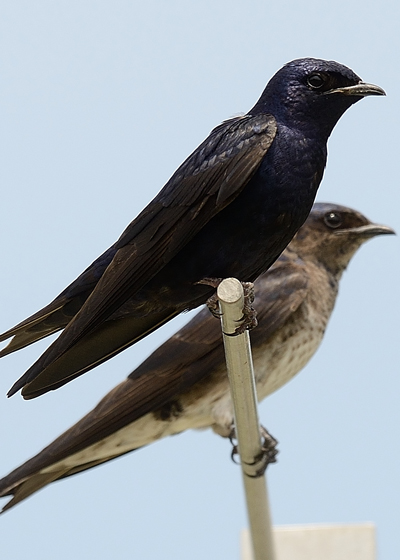
“On the avenue is a double line of noisy, clanging, banging cable cars, running a three-minute service. Diagonally across there were a number of pop-corn stands, gypsy fortune tellers with their array of gasoline jacks and the usual quota of loafers. Automobiles, delivery wagons, trucks, and all manner of vehicles are continually passing, and the street is generally well filled evenings, with a throng of saunterers, sightseers and loafers.”
Purple martins seem almost attracted to people. Even after migration to Brazil, where most purple martins spend the winter, their habit of roosting in and around human-made structures continues.
David Attenborough profiled such behavior in the The Life of Birds documentary series. He shows that even in the heart of the Amazon rainforest, the martins chose to roost in an oil refinery.
Throughout Brazil, martins frequently roost in cities and towns. But this behavior doesn’t seem to be as celebrated in Brazil as it is in the U.S.
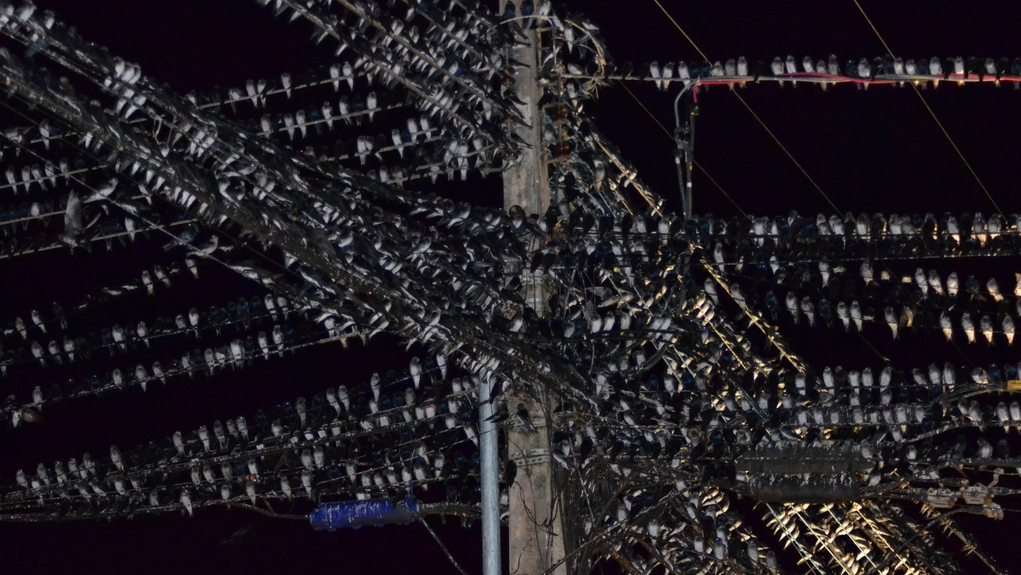
The difference in perspective is related to time scale.
In the United States, big communal roosts of martins are ephemeral, lasting only for a few weeks in the period prior to migration.
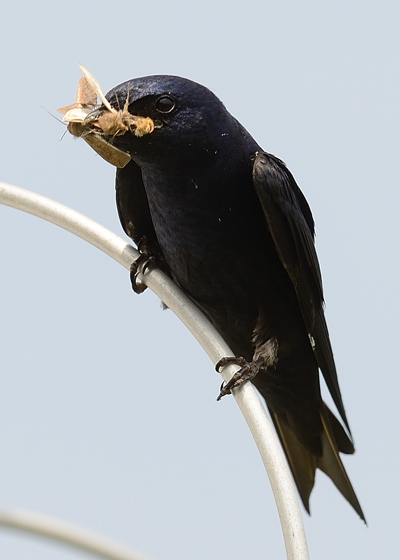
But in Brazil, the roosts can last for six months. Imagine six months’ worth of nightly excrement production from thousands of birds. Too much of a good thing can become a perplexing public nuisance.
News reports talk of municipalities needing dump trucks to haul away the excrement and feathers that accumulate over the course of months.
The toll that martins take on a public park can be seen in this Brazilian news video.
The people being interviewed (understandably) complain of the sight and smell of a city park piled high with bird dung. A researcher muses on the public health risk of the bird waste and the commentator wonders if there isn’t a way to scare the purple martins off to make them move to another location.
In another Brazilian city 600 miles away, the same problem and the same complaints are profiled. This report is more balanced, with the commentator expressing wonder at the spectacle of thousands of birds arriving from far off places.
In yet another news story, there are reports of ruined car paint and a schoolyard polluted with martin poo. The local government promises solutions.
Out of the sight and minds of its fans in North America, the purple martin faces a public relations problem in South America. Some people there wish the birds didn’t have such a great affinity for towns and cities.
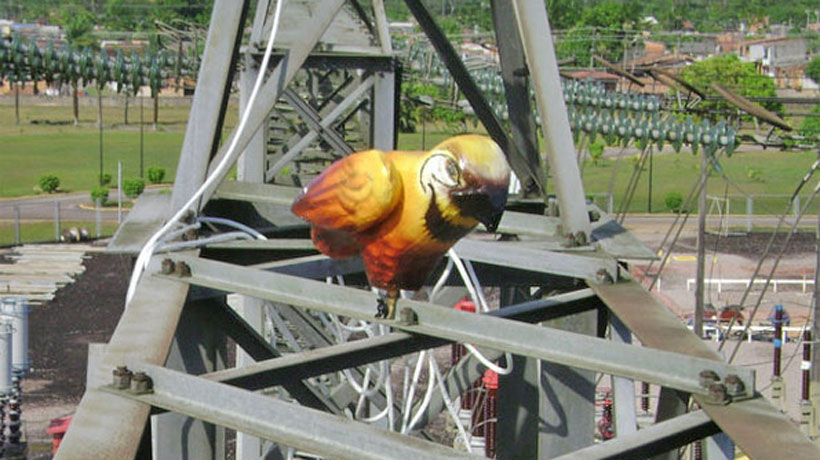
Martin Conservation Goes Beyond Bird Houses
Divergent perspectives regarding purple martins between North and South America remind us that conservation of migratory birds needs to take full view of their life cycle. It seems important to know what proportion of Brazilian martin roosts occur in places that cause problems for people. This is especially true if some of these roosts are being disturbed out of sanitation concerns. In that case, we also need to know what impact roost disturbance has on martin populations. As in the United States, purple martins are protected by federal law but indirect actions are permitted to discourage roosting, such as erecting scarecrows or exclusion netting.
Although we continue to learn more and more about the lives of purple martins, big questions remain unanswered. How did our own cultural practice of building martin houses emerge and how did martins become so utterly dependent on us? And what benefits are gained for purple martins by cozying up to roost in powerlines, refineries and city parks?
Purple martins are among our most studied and beloved backyard birds, and yet the reasons behind their unfaltering affinity for the human landscape remains a great mystery.
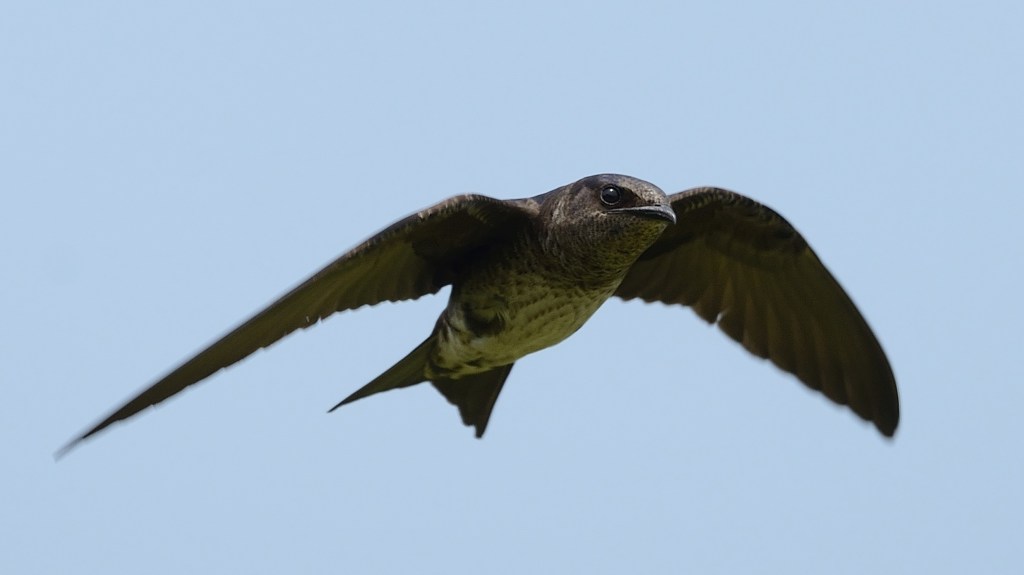



So how do you build the type of nest for Purple Martins will use exclusively?
Why are they called “Purple” Martins? I’d like to know if they can be kept as pets.
Thanks to the protections afforded by the Migratory Bird Treaty Act, it is illegal to keep any wild bird as a pet in the United States. This 1918 law helped halt the decline of many bird species in the United States and marked a major conservation turning point. Similar laws protect purple martins throughout the rest of the range, including Brazil.
https://en.wikipedia.org/wiki/Migratory_Bird_Treaty_Act_of_1918
Great article! thanks so much, especially for the illuminating South American perspective.
I second the note from Ryan McGuire! Good one.
What type of houses work best for purple martins? How high should the poles be for houses?
A good introduction to the purple martins and their life cycle, migration cycle, diet, environmental services performed, differences between at least parts of U.S. and Brazil, historical perspectives. and dependence on man-made nests (and humans in general?). We need to know much more! Keep us informed and involved, Joe!
Saw them Columbiana Ohio, beautiful birds, the hotel had made a “hotel” for them…. so pleasant and so peaceful… can’t imagine how many more bugs and pests there would be without them.
Western populations of Purple Martins regularly use tree cavities, it should be pointed out.
Have had martin houses for several years. Amazing birds. Issues in Brazil is probably related to not only this species affinity to human areas but also to deforestation in Brazil. Any possiblity to reproducing roosting areas that copy human structures to see if they would be receptive while at the same time using techniques that keep these birds from roosting on human structures near populated areas. They have done this I understand with chimney swifts.
Dr.Thomas Sipprell
Great article! Thanks!
There are too many humans, they are noisy, rude, take up space as far as the eye can see, they no doubt cause health issues to all other species. I do like some of the habitat they provide but I don’t need it. We must control this nuisance animal!!
Sincerely,
Purple martins
Mr. Campbell asked about purple martins that occupied boxes in spring but only remained for a short time. In Texas, nesting can begin as early as late March. Purple martins spend 4-6 weeks in and around nesting boxes before nesting begins. Once they lay eggs, incubation lasts 15-18 days. The young are able fly approximately 28 days after hatching. So your martins ought to have been at your boxes for up to three months. If they were around for considerably less time, then there are several factors that might have caused their abandonment of the boxes for this season. Here’s a very informative link that reviews some of the possibilities from http://www.purplemartin.org http://bit.ly/2cRgjuH
Great article Joe. Well done. An interesting observation from the roosting video down in South America is that there are no adult birds visible in these roosts when they zoom in. It appears that most all of these birds are light colored yearlings that would have just fledged the prior spring in North America. Older adult males are all black in appearance and adult females tend to have darker appearance with gray feathers on the underside their tails. I wonder where all the older adult birds are? They don’t appear to be in these particular roosts at least.
I have property within a mile of Catahoula Wildlife Refuge in Central Louisiana with a man made lake of about 6 acres. After building the lake 7 years ago, I added 3 purple martin condos and have had an abundance of martins until this year. There were a couple of scouts early in the year and then nothing else. Any ideas or suggestions?
HELLO – I enjoyed this article on “People Martins.” A good number of Purple Martins were spotted in their houses on a small lake in Dallas, Texas this past spring, but they didn’t stay long…..I believe I saw baby birds in the nests, but all of them were gone in a short time……..Why did they leave and where did they go? THANK YOU – Willard Campbell – Dallas, Texas